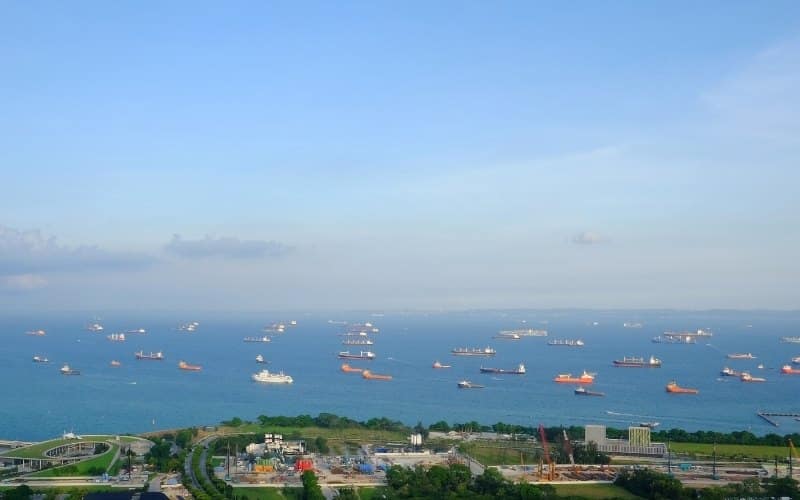What are Vessel Traffic Services?
Managing traffic for marine routes is a challenging yet essential task. The technicalities of vessel traffic management are immense, so specialised services are always needed.
Vessel traffic services deal with managing ship traffic on sea routes, suggesting the best ways for a vessel and ensuring no two ships run into each other on congested routes.
All this ensures that navigational information flows smoothly in marine routes and ship traffic remains organised. As included by International Maritime Organization, Vessel Traffic Services also deal with making oceanic routes safer and more efficient.
History of Vessel Traffic Services
The concept of VTS came into being with an increasing need for a single body to regulate maritime traffic. As marine routes became populated, the number of accidents on these overworked routes increased. The current form of VTS first appeared in the port of Liverpool in 1949. From there, it spread through Europe.
In earlier days, ships entering a port would let their presence known through flag signals. However, the development of radar during the Second World War made monitoring and tracking vessels possible.
The first radar surveillance in the US was established in 1950 in Long Beach, California. Since 1979, the United States Coast Guard has cooperated with the Canadian Coast Guard to manage traffic situations in adjacent waters, including the navigable waters of the United States.
The coastal authority keeping track of shipping traffic by radar and the facility for transmitting messages to the vessels via radio constituted the first VTS systems. However, VTS, as we know it today, came into existence in the 1980s. Today, ships entering a VTS area are tracked by authorities via the control centre, which functions per the Inland Navigation Rules.
E.g. Vessel Traffic Center situated at Pier 36 in Seattle oversees the Strait of Juan de Fuca, Rosario Strait, Admiralty Inlet, and Puget Sound. The Cooperative Vessel Traffic Service (CVTS) allows two Canadian Vessel Traffic Centers to work together with Puget Sound Vessel Traffic Service.
In 1971, the Bridge to Bridge Radiotelephone Act and The Ports and Waterways Safety Act of 1972 were passed, which later established present-day VTS.
Centralised authorities like IMO maintain VTS through proper personnel and VTS zones in different parts of the world. Other organisations like IMPA, IFSMA, IALA, IHMA and IAPH are also part of the standardised VTS protocol.
International Association of Marine Aids to Navigation and Lighthouse Authorities/IALA
A non-profit organisation, IALA, was established in 1957 as a competent authority which works as an umbrella for other stakeholder groups and organisations concerned about marine aid navigation, including manufacturers and consultants from different parts of the world. Also, Aids to navigation can take various forms. They may be lit or unlit, such as lighthouses, buoys and beacons.
It aims to ensure that the navigation and movement of ships are safe, cost-effective and do not harm the environment. It also strives to improve the efficiency of vessel traffic in a given geographical area. Hence, it mainly focuses on vessel safety.
Importance of Vessel Traffic Services
The importance of Vessel Traffic services can be better understood by its functions in managing ship traffic. It also ensures the safety of life at sea by overlooking the safety of ships, offshore installations, sea areas and the marine environment, along with attaining maximum traffic flow from any given route.
The role of VTS becomes even more important during adverse weather, poor visibility, hazardous conditions and vessel congestion.
Maximum economic returns from a marine route can be realised with the help of these traffic services that keep important navigational information available for all mariners. It even helps in keeping a tab on the movement of unauthorised cargo movements, making waters safer and more controlled.
However, one of the most critical roles of these services is to act as a vessel finder. The information gathered, stored and replayed by various sensors helps monitor vessels’ movements. This crucial marine information is always available and can be used to find a ship if it goes missing.
Passing a VTS Area
While passing through a vessel traffic service area, ships should strictly adhere to governing rules and maintain a listening watch on the prescribed frequency. They must report any deviations from the sailing plan if a plan was made with the VTS Authority.
Suppose a vessel’s communication equipment fails and cannot reach the control centre through the given frequency. In that case, the master must inform the VTS control centre and other ships nearby, using any other means of communication.
Types of vessel traffic services
Vessel traffic services chiefly include devices to collect and transmit navigational information, including traffic images. This information is further transmitted to various vessels in a given VTS zone. This helps the vessels’ captains to make better navigational decisions and decide their routes. Several devices are used for gaining and transmitting this information. Depending on the type of medium used to achieve this information, VTS can be classified as:
- Surveilled – they consist of land-based sensors for attaining important marine information. These sensors include radars, AIS and closed circuit television sites. Signals from these sensors are sent to central locations where trained VTS personnel analyse the information and guide ship traffic.
- Non-Surveilled- consists of one or more reporting points where ships notify about their identity, course, speed and other data. Using this data, courses of various vessels are mapped out and regulated to avoid mishaps.
Uniformity is attained in between surveilled and non-surveilled sensors for complete coverage of entire marine traffic. Hence, understanding these sensors’ nature and working would be important to any mariner. Here is a list of the most commonly used sensing components of vessel traffic services.
1. Radar system
It includes the transmission of navigational information through radio waves of specific frequencies. These frequencies can be read to determine the size and speed of any incoming object to a distance of several miles. All vessels are equipped with radar systems which are further connected to the onshore centre for transmitting information and forming a web of data.
2. AIS
It stands for Automatic Identification System and helps improve the safety and efficiency of navigation. This system makes use of a broadcast system that allows for updating data on connected vessels automatically. This is a speedy system which can update information every two seconds. Self-organising Time Division Multiple Access (SOTDMA) technology handles and transports large amounts of data at high speeds.
3. Radio direction finder
As the name suggests, this component of VTS helps to obtain maritime information that will help locate the direction from which radio frequencies are coming. This device mainly helps in acting like a vessel finder.
Vessel traffic services are used for the sole purpose of making all ship routes safer and more efficient. With trained personnel, this take becomes easier and makes marine routes safer.
Frequently Asked Questions?
1. There are how many types of Vessel Traffic Services?
The International Maritime Organization recognises three kinds of services offered by VTS: Information Service or INS, Traffic Organisation Service or TOS, and Navigational Assistance Service or NAS.
2. What is the purpose of Vessel traffic services?
VTS contributes to the safety of life at sea, including safe navigation, protection of offshore areas and installations, work sites and the marine environment, from the adverse effects of marine traffic.
3. What is a Vessel traffic service sailing plan?
It is a plan mutually agreed upon by the VTS Authority and the master of the ship regarding the vessel’s movement in a VTS area. If the sailing plan changes or alters, the master must inform the VTS Centre.
4. What are the components of the VTS?
VTS functions effectively due to its various components or the data it gathers. It includes information on the traffic situation, vessel position, movement, identities and intentions regarding manoeuvres, destination, routing and any other data required for smooth VTS operations.
5. What communication equipment is used by VTS and the vessel?
Generally, VHF Radios are used for this purpose. They can be fixed on the bridge or the radio room and are part of the vessel’s GMDSS Equipment. They are used for bridge-to-bridge communication and conversations with the VTS.
You might also like to read
- Understanding Different Types Of Manoeuvres of a Vessel
- What are Marine Fenders?
- What is Vessel Management System?
- 9 Common Mistakes That Can Occur While Using Traffic Separation Scheme On Ships
- Causes and Consequences Of Vessel Delays in Container Shipping
- What Are Liner Services and Tramp Shipping?
Disclaimer: The author’s views expressed in this article do not necessarily reflect the views of Marine Insight. Data and charts, if used in the article, have been sourced from available information and have not been authenticated by any statutory authority. The author and Marine Insight do not claim it to be accurate nor accept any responsibility for the same. The views constitute only the opinions and do not constitute any guidelines or recommendations on any course of action to be followed by the reader.
The article or images cannot be reproduced, copied, shared, or used in any form without the permission of the author and Marine Insight.
Do you have info to share with us ? Suggest a correction
Latest Marine Navigation Articles You Would Like:
Subscribe To Our Newsletters
By subscribing, you agree to our Privacy Policy and may receive occasional deal communications; you can unsubscribe anytime.
Web Stories

About Author
Zahra is an alumna of Miranda House, University of Delhi. She is an avid writer, possessing immaculate research and editing skills. Author of several academic papers, she has also worked as a freelance writer, producing many technical, creative and marketing pieces. A true aesthete at heart, she loves books a little more than anything else.





















